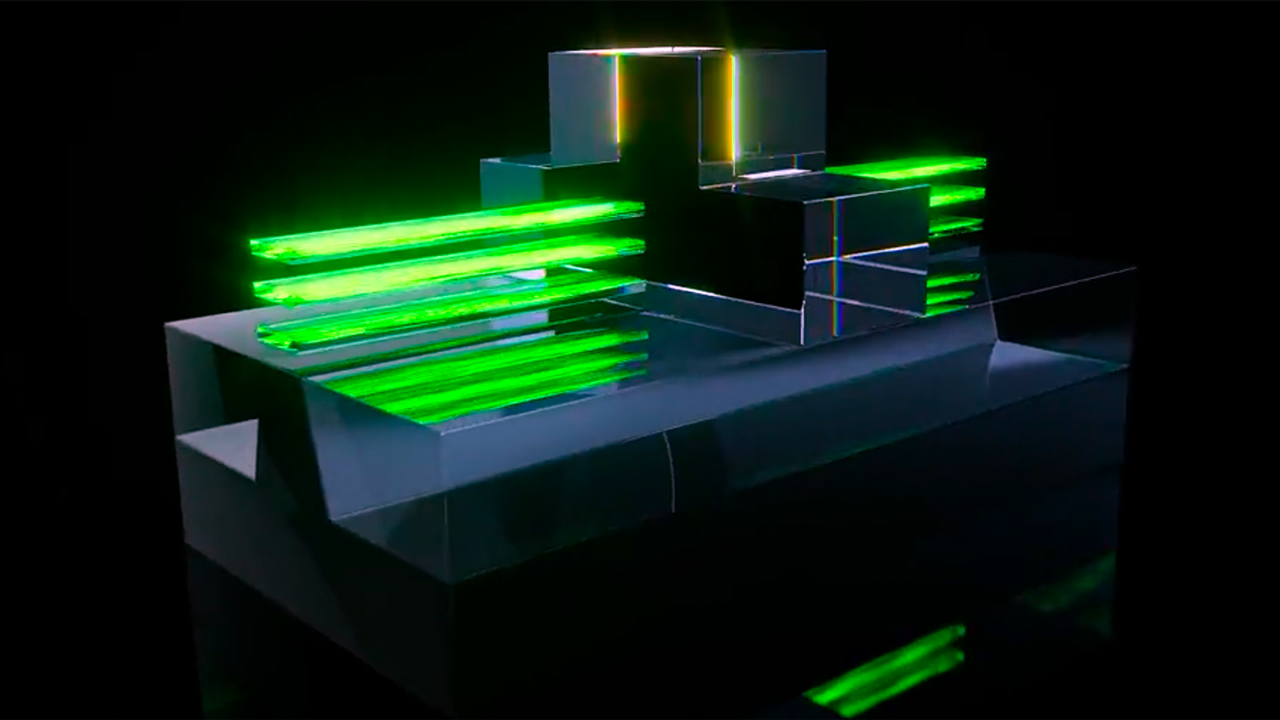Nvidia's Jensen Huang expects GAA-based technologies to bring a 20% performance uplift

Nvidia's Jensen Huang said during a Q&A session at GTC that next-generation process technologies relying on gate-all-around (GAA) transistors will likely bring about a 20% performance boost for the company's processors, reports EE Times. However, the most significant performance uplifts for Nvidia's GPUs are brought by the company's architectures, as well as software innovations.
When asked about future generation Nvidia GPU architectures like Feynman, which is expected two generations from now (2028), Huang mentioned that if Nvidia transitions to a process technology that relies on GAA transistors, it should bring a 20% increase in performance.
Our own Jarred Walton was at the Q&A, and says Huang seemed to downplay the importance of process node changes, emphasizing that the slowdown in Moore's Law means brand-new process technologies going forward are only likely to bring around a 20% improvement — in density, power, and/or efficiency. It wasn't a definitive statement on what node Nvidia might intend to use, though the answer was in response to an analyst question looking for his comments about the potential for Nvidia to use Samsung Foundry in particular.
Huang also noted that while improvements enabled by leading-edge process technologies are welcome, they're no longer transformative. "We'll take it," he said, but indicated other factors were more important. As AI systems scale, the efficiency of managing vast numbers of processors is becoming more important than the raw performance of each processor. Data centers are increasingly looking at performance per watt, Jensen said, nothing that "we're at the limit of physics."
Unlike Apple, which is TSMC's alpha customer for all leading-edge nodes, Nvidia is not typically a company that adopts TSMC's latest process technologies first. Instead, it uses proven technologies. Nvidia has used tailored versions of TSMC's 4nm-class process technologies — 4N and 4NP — to produce its Ada Lovelace, Hopper, and Blackwell GPUs for client PCs and datacenters. TSMC's 4nm-class production nodes belong to the company's 5nm-class process development kit and are essentially refined versions of the foundry's 5nm technology.
The company's next-generation GPUs for AI (codenamed Rubin, with custom Vera CPUs) are expected next year and are projected to use TSMC's 3nm-class fabrication process (presumably N3P, or a tailored version like "3NP"). To that end, it makes sense to expect Nvidia to adopt a GAA-based process technology for Feynman, which is expected in 2028.
TSMC itself expects its first GAA-based process technology — N2 — to increase performance by 10% to 15% compared to N3E, the company's second generation 3nm-class process technology that precedes N3P. Again, Nvidia's Huang likely wasn't even referring to TSMC N2 or Samsung's alternative or even Intel's 18A, but rather just suggesting a 20% improvement in general is what he expects.
It's worth noting that since Nvidia does not use first-generation process technologies (or at least has not used in years), we would expect Feynman GPUs to adopt N2P (if it continues to use TSMC), which enhances performance, reduces resistance and stabilizes power delivery, or even A16 that adds backside power delivery and promises an 8% to 10% performance uplift compared to N2. Both N2P and A16 are expected to ramp in 2027.
If Nvidia adopts N2P or A16 for its 2028 products, then it's reasonable for the company to expect a 20% performance per watt gain for its Feynman GPUs at N2P or A16 compared to Rubin GPUs at N3P. It could be even more than that, though Nvidia seems to be pushing for maximum performance at times rather than maximum efficiency, given the voracious demands for AI compute right now.
While Nvidia is one of the leading developers of processors these days, Jensen Huang emphasized multiple times that his company is not simply a semiconductor company anymore. Instead, he described the company as a provider of large-scale AI infrastructure. He also described it as a leader in algorithm development, especially for computer graphics, robotics, and fields like computational lithography.
But while Nvidia has been gradually shifting from development of 'just' compute GPUs to AI servers and now server racks and clusters, Huang believes that Nvidia does not necessarily compete with its own customers. According to him, Nvidia does not build actual solutions for the end user, but rather supplies foundational technologies.
Get Tom's Hardware's best news and in-depth reviews, straight to your inbox.

Anton Shilov is a contributing writer at Tom’s Hardware. Over the past couple of decades, he has covered everything from CPUs and GPUs to supercomputers and from modern process technologies and latest fab tools to high-tech industry trends.